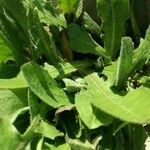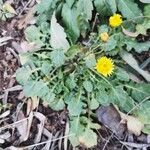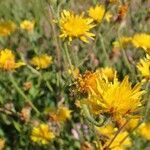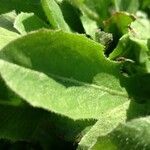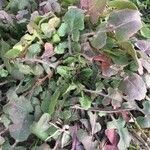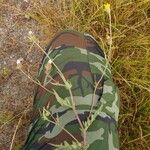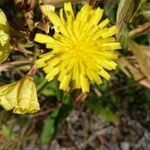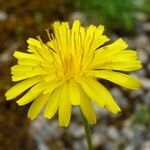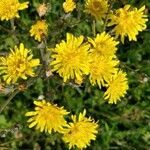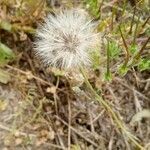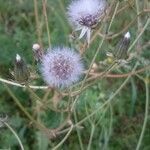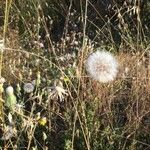Annual. Stems erect, divaricately branched above, ribbed to grooved, c. 40-60 cm tall; hairs both white, slender, subappressed, and pale, spreading, coarser, glandular. Rosette and lower stem lvs thin, petiolate, linear-oblanceolate, runcinately pinnatifid, 5-15 × 2-4 cm, with pale hairs 1-2 mm long; lobes patent, entire or toothed. Upper stem lvs similar, becoming sessile and simple, narrowly oblanceolate to linear, with narrowly triangular teeth especially at subauriculate base. Capitula turbinate; buds nodding or drooping. Involucral bracts with dense glandular and finer eglandular hairs on outer surface and fine appressed eglandular hairs on inner surface; outer bracts 12-15, linear, c. ⅓ length of inner bracts; inner bracts linear-oblanceolate, keeled, 9-12 mm long, with pale to scarious, ± glabrous margins. Receptacle areoles with raised ciliate margins. Corolla yellow, with red stripe on outer face of ligule. Achenes brown, 10-ribbed, fusiform, scabrid, 8-13 mm long, the outer not beaked, the inner beaked. Pappus bristles in 2 rows, fine, dull white.
Annual or short-lived perennial, 10–50 cm high, with a rosette and several flowering stems bearing some cauline leaves; stems erect, branching divaricately, hispid.. Leaves of the rosette petiolate, oblanceolate, 2–4 cm long, 0.7–1 cm wide, margins denticulate to pinnately lobed; cauline leaves similar but sessile, the base auriculate.. Capitula few to many; phyllaries lanceolate, becoming strongly keeled, spongy at base, setose beneath, puberulous above; receptacle paleate.. Corolla yellow, the ligules usually reddish purple beneath.. Achenes fusiform, beaked, 7–9(–12) mm long; pappus 4–8 mm long.
For description of subspecies occurring in Australia see Crepis foetida L. subsp. foetida.
A herb. It grows 10-50 cm tall. There are leaves at the base and along the stem.
